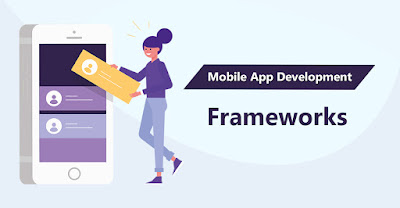Outsourcing is a quite effective way of cost
savings used by both large and small companies. It is the practice of hiring an
external firm, not related to your own business, to perform the work that the
company itself would perform. Due to its effectiveness, outsourcing has become
an industry in itself, which is the way in which the outsourcing market reached
104,600 million dollars in the year 2018.
Large companies use outsourcing as a method to
save costs. Companies that do work on their own increase costs in all facets,
development, marketing, employee training and much more. All these costs end up
affecting the cost of the service or real product that is selling and that
dissuades customers. A company saves a large part of these costs through
subcontracting and this gives the company the opportunity to sell a product
that can be produced in a viable manner.
A smaller company can outsource work for some of
its specific operations, by hiring remote candidates with limited experience.
The rare specialists can be founded and interviewed in a short time, which
helps meet the needs of all small businesses. In this way, it helps keep up
with the larger companies with which it competes.
Today we observe the real pros and cons of
outsourcing compared to internal production and we hope that you as a company
can decide which option best suits your business objectives.
Pros & Cons of Inhouse Development
Pros of Inhouse Development:
- The most immediate advantage of having your own
production is having your employees on-site. The employees who are
responsible for creating the product or providing the services know the
nature of the work almost from the first day. Any problem that may arise
can be dealt with immediately and there is no delay or delay in case a
problem occurs.
- The employee he hired was through his training and is
likely to have been hired after a tough investigation and interview.
Therefore, they must be extremely capable of doing the job you want.
- All development is under an organizational structure
and under its supervision. Therefore, the development cycle can be
observed to improve in each step to guarantee good quality. The feedback
time is very fast.
Cons of Inhouse Development:
- There are many hidden costs. Costs you would never have
thought about. Installation costs, search for a production house, purchase
of equipment. The cost of maintaining employees is also immense and
probably unforeseen by ambitious entrepreneurs when starting businesses.
Expenses such as payroll taxes, health insurance, paid time off, travel,
vacation and sick leave, contributions to pensions and other expenses.
- The total cost of business operations will always be
higher.
- Scalability is difficult in-house development work.
Letting employees go may cost a lot due to layoff packages and long-term
contracts.
- Hiring new employees is a task in itself. Go through
the application, spend time training them and the potential to lose them
to the competition after all that. It can be extremely frustrating.
Pros & Cons of Outsourcing Development
Pros of Outsourcing Development:
- The biggest advantage and factor that business owners
consider when choosing to outsource is to save costs. Outsourcing reduces
the fixed costs in variables and the business can start to work without
having too many problems in the early stages. The investment can focus on
the factors of production of business income, which is good for the
investors themselves.
- The mentioned work costs to hire and maintain an
employee are reduced. It is possible that an employee does not meet your
expectations even after the training. If you are running a project-based
business, hiring employees for that project and then figuring out what to
do with them once this is done is quite frustrating.
- New projects can be started almost immediately. If you
have hired a capable mobile app outsourcing firm, you can start
immediately compared to the internal production where you will have to
find the right employees, train them, find a real 'house' to produce in
(if the operations are not properly handled in your building)
- Small businesses that would otherwise be inundated with
costs can compete hand in hand with larger companies. Outsourcing allows
them to have availability of the same resources presented to the largest
companies.
- The risk is assumed by the outsourcing company. Market
competition, regulations, financial conditions and the availability of
resources are all variables that affect a business. An outsourcing company
probably knows much more about how to avoid risks in their fields of
expertise.
- Highly scalable. Outsourcing is a great option when you
need to hire more people to keep up with the project, but you have a
limited budget. The associated company assumes responsibility for
selecting the appropriate specialists and incorporates them quickly. The
same applies when you reach certain milestones and you need to reduce the
size of the team.
Cons of Outsourcing Development:
- The feedback and the time method are higher than in the
in-house model. Often, the mobile app development outsourcing companies
are in different time zones and, if a problem should occur, you would have
to wait a certain amount of time to resolve it.
- A mobile app
development outsourcing company
is managing different development projects at the same
time, which means that the team works in operational mode.
Wrapping Up:
The cost of internal development varies from one
state to another, from one country to another, and so does the cost of
subcontracting. Consider all the possibilities when starting a business, as if
you will have a close and frequent relationship with your client, the nature of
your product and your own skills, such as cost and experience. However, if the
offshore mobile
app development company is reliable and has a
good reputation, all externalization problems disappear and the company obtains
an excellent service without the headache that comes from the acquisition,
maintenance, and administration of internal resources.




